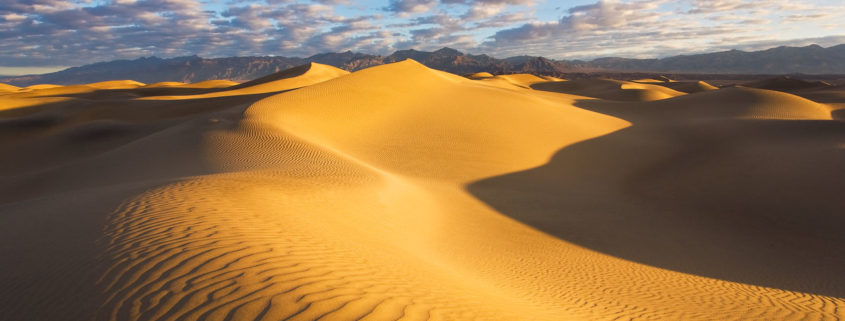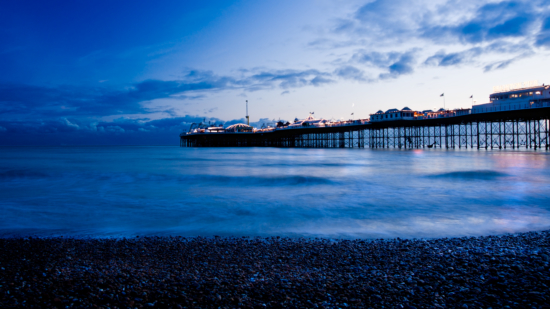4 Photography Milestones of Purchasing a New Camera Body
When should you purchase a new camera? When you desire one and you can afford it.
I won’t be that guy who tells you that you don’t need a better camera, that you are most likely the limit of your photography, and you should improve your skills before you think of buying one. Cameras are cool gadgets! And, if owning a new camera is going to spark your creativity and take you outside to shoot, please, go on and buy it.
The quality of your images depends, in large portion, on your skills, your compositions, the quality of the light, and the scenery in front of you. Not the new camera that you may have just acquired. However, it helps, on the other hand, understanding a few milestones in the quest for acquiring the “Best Photographic Equipment” for landscape photography, that all of us will likely go through.
First Milestone: Moving from From Crop Sensors to Full Frame
The number of articles about the difference between crop sensors and full frame sensors is second only to the number of articles with a title similar to Should I shoot RAW or JPG?. (By the way, you should shoot RAW).
This image was shot in Brighton almost ten years ago on a Sony A200, my first DSLR, with a 12mpx CCD crop sensor. Did it matter? No. The light was amazing and, by complete accident at that time, I nailed the composition. To this day, this is one of my favorite images. The dynamic range was reasonable enough not to stress the sensors and the image makes for very decent small prints. Soon after this, I started shooting scenes with higher dynamic range. For these scenes, the difference between the shadows and the intensity of the highlights was so large that a small crop sensor couldn’t keep up in a single exposure. A full frame sensor, with those larger pixels that gather more light, generally have higher dynamic ranges.
A first clue for buying a new camera? When you expect to shoot scenes with a higher dynamic range.
This image from Cornwall is both dynamic and requires a high dynamic range. It was shot with my first full frame camera, a beautiful Sony A900 with a CMOS 24mpx full frame sensor.
Second Milestone: Full frame to a Better Full Frame
Here things get a little murkier. The improvements in image quality is very constant year after year, but it’s hardly dramatic. And the law of diminishing return reigns supreme. The move from the Sony A900 to the shiny new Sony A99V didn’t bring much improvement in image quality for me, but it did bring a significant improvement in how the camera was operated, specifically with the addition of Live View. This substantially changed my workflow in the field.
A second clue for buying a new camera… the new camera operates much better and it makes your shooting experience more pleasurable.
This Black Sand beach was shot in Hawaii with a Sony A99V equipped with a 24mpx full frame sensor. The use of a swiveling screen with live view made the shooting experience much easier. I could focus on composition by looking at a beautiful bright screen.
Third Milestone: More Mega Pixels
My last camera was purchased when I started printing my work at home on a large format printer. I needed more resolution to print up to 24×36” which happens to perfectly match the 42mpx sensor of the new A99II. It also comes with a much-welcomed increase in dynamic range over the predecessor. Printing is a necessary step for any photographer on the path to enlightenment. You don’t need 42mpx if you don’t print your work.
A third clue for buying a new camera? You expect to produce large prints and need more resolution.
Golden Wave was shot in the Death Valley with a Sony A99II, 42mpx full frame sensor. Would this be possible with a crop sensor camera? Yes, definitely, since what counts in this image is the strong composition and the beautiful side light sweeping across the frame. But I wouldn’t have been able to print this image large and keep all those beautiful details in the sand.
Fourth Milestone: From Full Frame to Mirrorless
I haven’t moved to mirrorless yet. I love big cameras, but that does not mean that you don’t have to love them. Today’s mirrorless camera offer advantages in terms of size and weight for those photographer who have trouble carrying big heavy equipment.
But here’s the fourth and final clue for buying a new camera… you desire it and you can afford it. If the new camera makes you shoot more, go on and buy it and use it to shoot beautiful, well-composed images.







